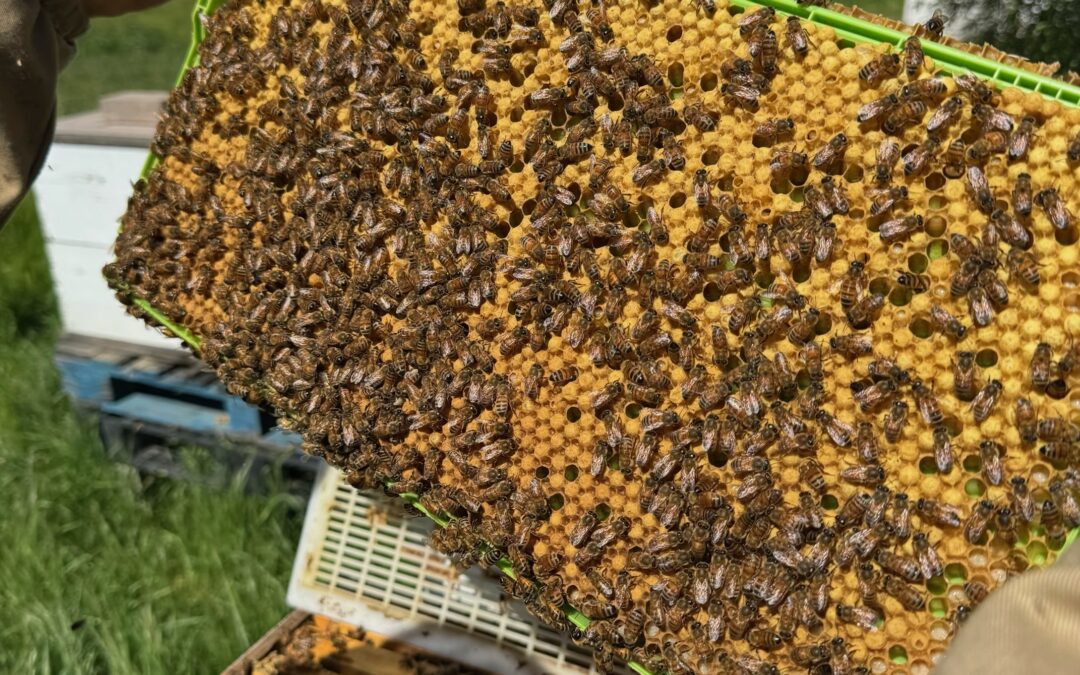Trapping Varroa mites using a drone frame is a strategic method utilized by beekeepers to control the population of Varroa destructor mites within a honey bee colony. Varroa mites are ectoparasites that feed on the bodily fluids of honey bees, severely impacting their health, productivity, and survival. Drones (male bees) are preferred by Varroa mites for reproduction because drone brood has a longer development period, allowing the mites more time to reproduce. Here’s a detailed overview of how to use a drone frame to trap Varroa mites:
Understanding the Concept
The principle behind using a drone frame for Varroa mite control is based on the mite’s preference for drone brood. Beekeepers exploit this by providing a frame specifically designed for the queen to lay drone eggs. Once the mites infest the drone brood, the beekeeper removes the frame, effectively reducing the mite population.
Step-by-Step Guide to Using a Drone Frame
- Select the Right Frame: Purchase or construct a drone frame, which typically has larger cells that encourage the queen to lay drone eggs. These frames are inserted into the hive in place of a standard frame.
- Placement in the Hive: Position the drone frame in the brood chamber, where the queen is most active. The exact location can depend on your hive’s design and the queen’s laying patterns, but it’s usually placed towards the center of the brood nest.
- Monitoring: After inserting the drone frame, monitor the hive regularly. It takes approximately 24 days for drone brood to develop from eggs to emerging adults. Pay close attention to the frame after the eggs have been laid and capped, as this is when Varroa mites will invade the cells to reproduce.
- Removal of the Drone Frame: Before the drone brood emerges (around 24 days after egg laying), remove the drone frame. This timing is crucial to ensure that the mites are trapped within the capped cells but the drones are not yet emerging, which would release the mites back into the colony.
- Freezing the Frame: Once removed, the drone frame can be placed in a freezer for at least 24 hours. Freezing kills the drone brood along with the Varroa mites infesting them. This step is vital for the method’s effectiveness in mite control.
- Cleaning and Reintroduction: After freezing, the frame needs to be cleaned. The dead drone brood and mites can be removed by rinsing the frame with water or allowing the worker bees to clean it once reintroduced. Once cleaned, the frame can be placed back into the hive to repeat the process if needed.
Additional Tips
- Timing: The use of drone frames is most effective during the early spring to late summer, aligning with the peak in Varroa mite reproduction and drone production within the hive.
- Multiple Frames: For larger hives or severe infestations, using more than one drone frame might be necessary.
- Integrated Pest Management (IPM): Consider combining drone frame trapping with other Varroa mite control methods for a more comprehensive approach.
By strategically utilizing drone frames, beekeepers can effectively reduce the Varroa mite population within their hives, thereby supporting the health and productivity of their bee colonies. This method, while requiring regular monitoring and management, offers a chemical-free approach to mite control, aligning with sustainable beekeeping practices.

